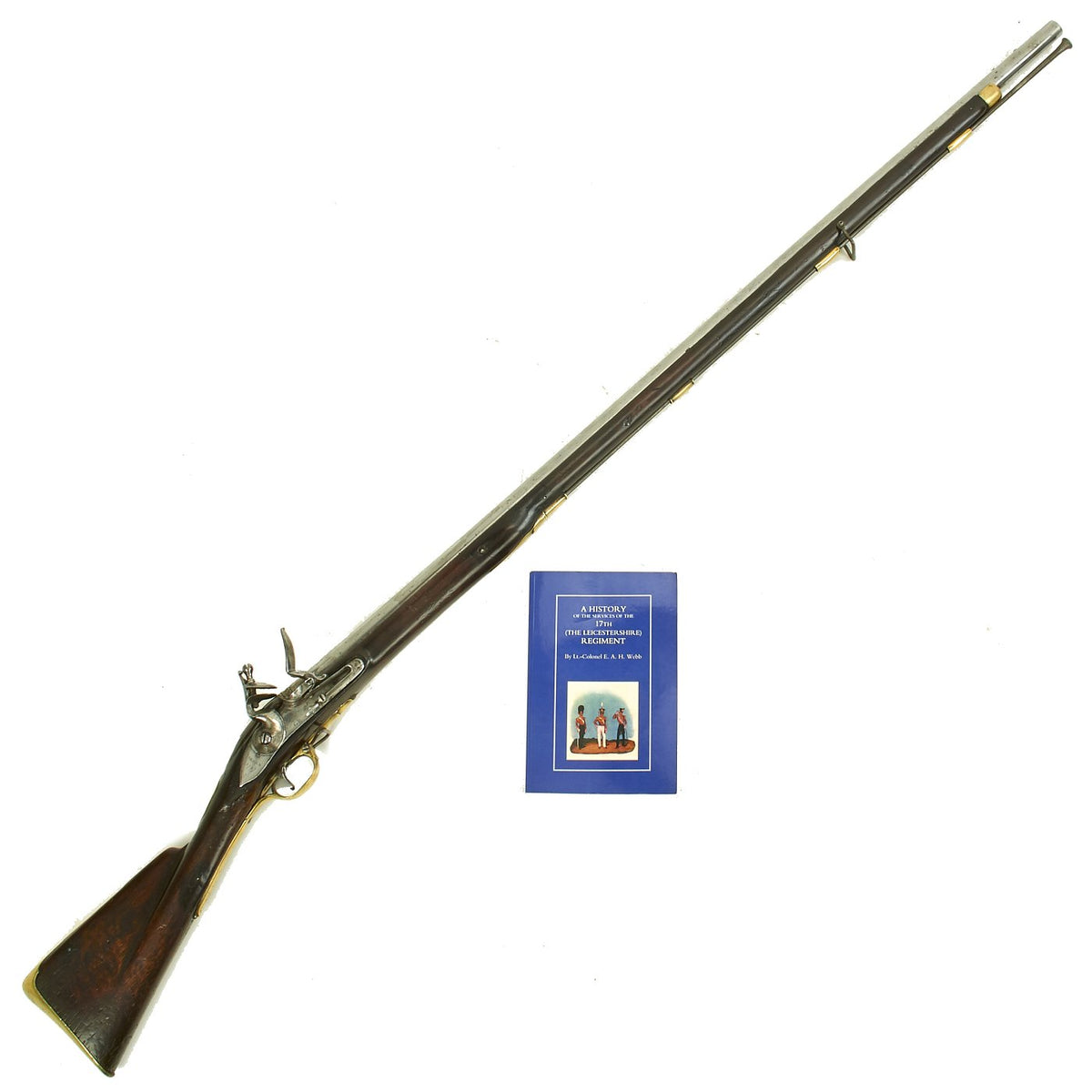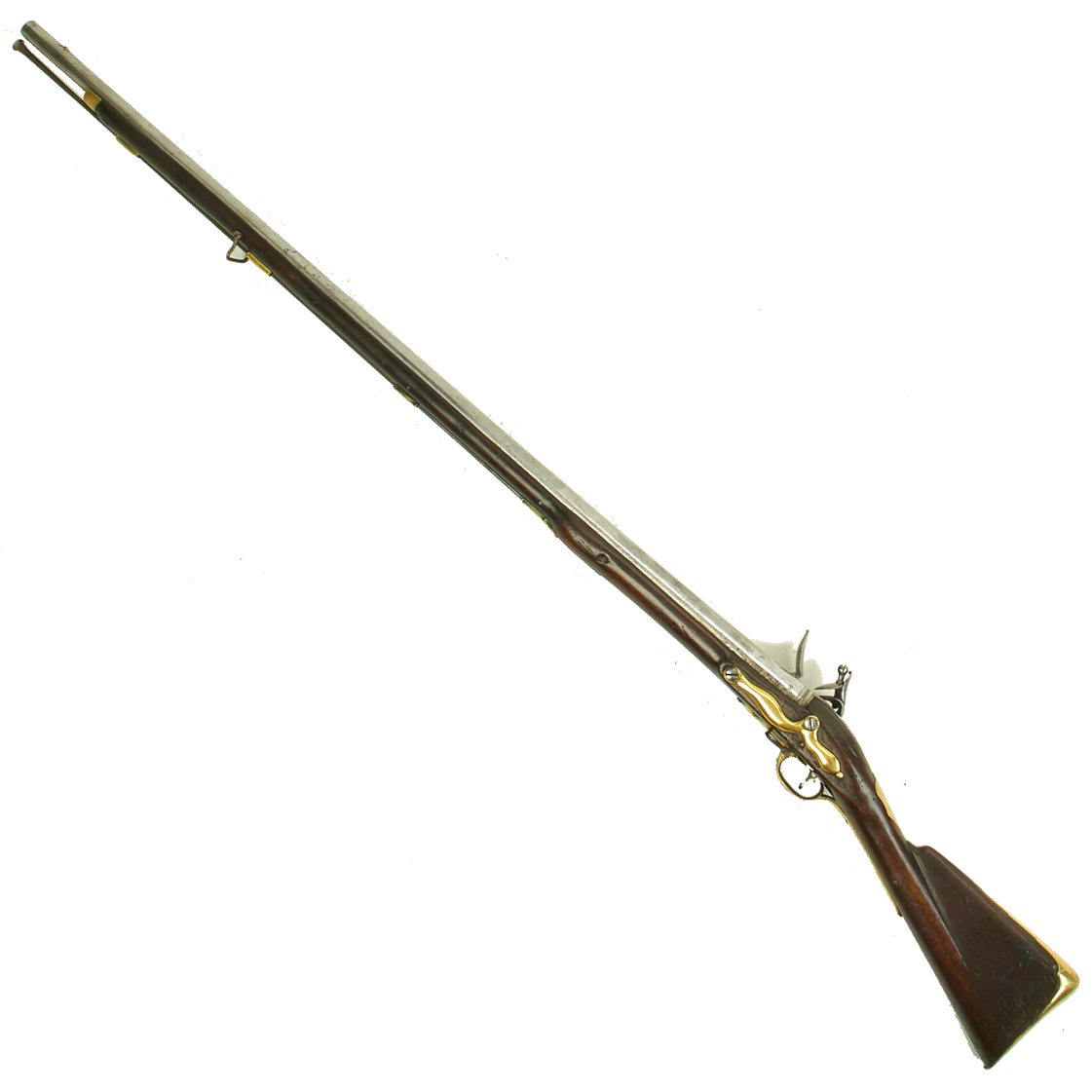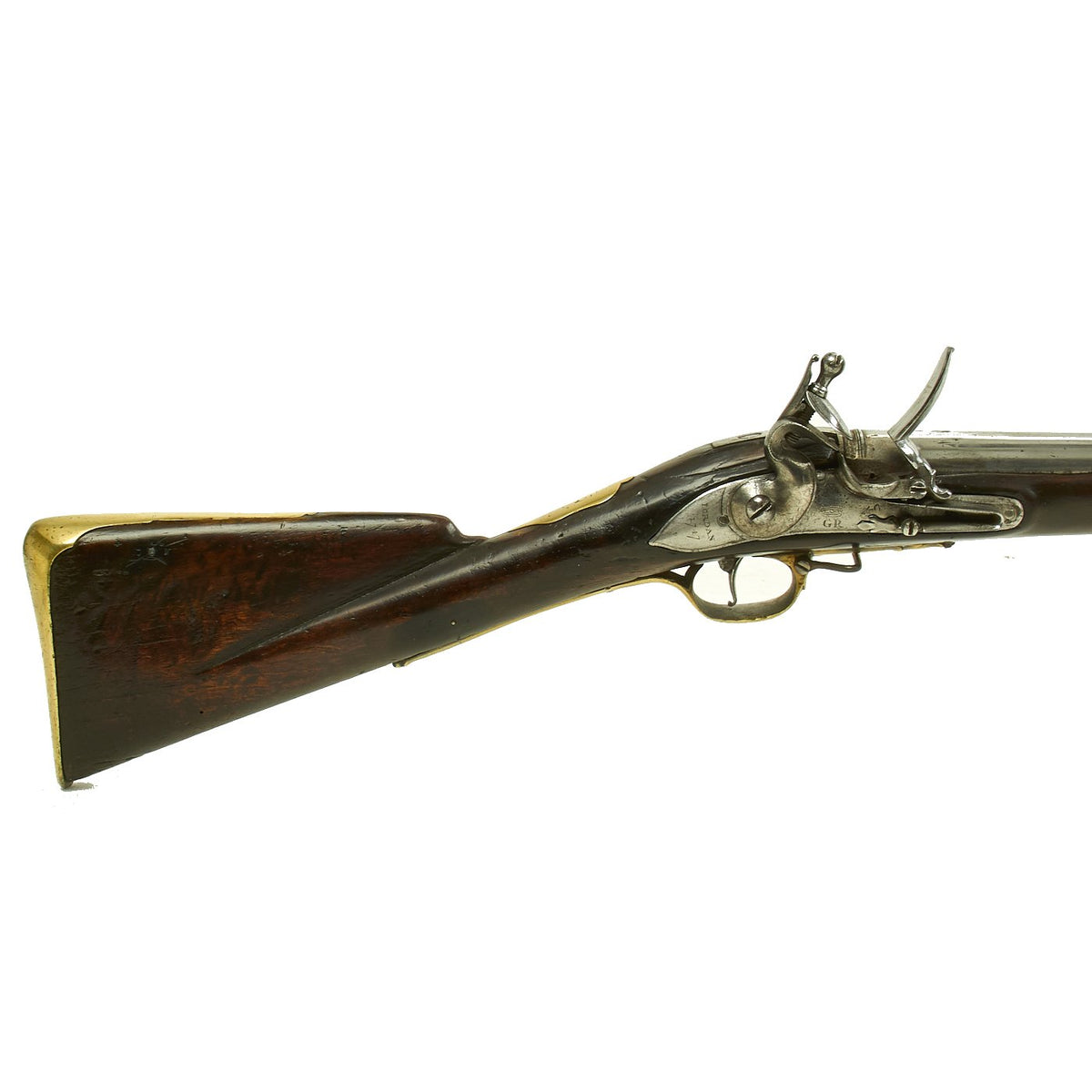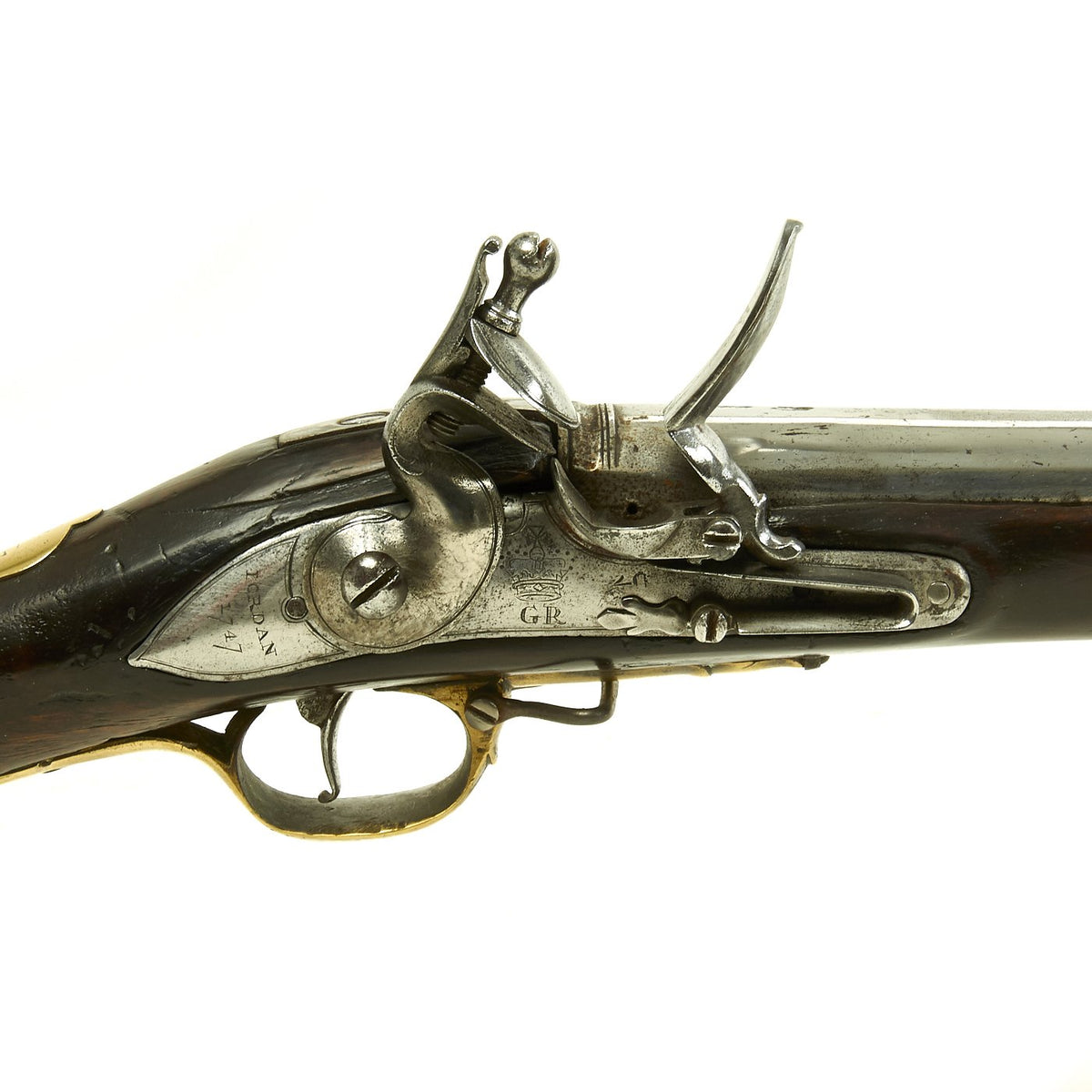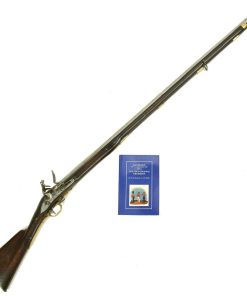Original British Long Land Pattern 1748 Brown Bess Flintlock Musket by Jordan marked to the 17th Regiment – dated 1747 Original Items
$ 21.995,00 $ 5.498,75
Original Item: One of a Kind. Just fresh to the Market this remarkably RARE Pattern 1748 Brown Bess made by JORDAN, dated 1747 and marked to the 17th Regiment of Foot. This really is a fantastic looking gun, in great condition, totally correct to the Pattern of 1748. This “new” design was& basically the official change from wooden to iron ramrods, with the ramrod pipes being of smaller bore size. For more information please see the lovely work The Brown Bess: An Identification Guide and Illustrated Study of Britain’s Most Famous Musket by Erik Goldstein and Stuart C. Mowbray, pages 50 to 61.
It is recorded that Thomas Jordan was a London gunmaker who produced arms for the British Ordnance from 1733 until 1762. It’s known that he marked his locks with his name spelled either with an I or J in Jordan. The musket has the correct “banana” shaped lock plate, which is fully marked with Crown over G.R. mid lock for King George III, with IORDAN / 1747 across the tail. There is also the “Lock Viewers Mark” underneath the frizzen. Action is strong and holds at half cock, firing correctly at full cock. The lock is quite clean and in great shape.
The musket has a full 46″ regulation length, .75″ smoothbore iron barrel, which bears British Proof Marks, which are still partly clear. They include CROWN / GR and another that looks to be a “Viewed” mark, as well as an IG inspector or makers mark on the left side.
This example has a lovely walnut stock, which still retains the “bannister rail” butt stock and the large bulge by the lower ramrod pipe of the Long Land Pattern. Still installed is the correct iron ramrod. Previously to this Wooden ramrods were the norm, but many earlier muskets still are fitted with the later iron rods. It should be noted that this musket still bears a “Short” front pipe as the 1742 Pattern. The “Long” front pipe was introduced with the 1756 Long Land Pattern Brown Bess Musket. It features the standard all brass mounts including a long “Rounded” Side Plate.
The top of the barrel bears the following regimental marking:-
17 = REGt
Additionally, the escutcheon or thumb plate on the upper wrist of the stock is marked:- “2 / 23, for Second Company, Soldier # 23 perhaps.
The 17th Regiment of Food was originally raised in 1688 by Colonel Solomon Richards, with the expulsion of King James the Second. It saw service in the Wars of the Spanish Succession and helped put down the Jacobite Rebellion of 1715 in Scotland at the Battle of Sheriffmuir in 1715. In 1751 a royal warrant assigned numbers to the regiments of the line, and the unit became the 17th Regiment of Foot. It traveled to North America in the Seven Years/French and Indian War of 1756 to 1763 and was present at the Siege of Louisbourg in 1758 and the Battle of Ticonderoga in 1759. The regiment then returned to England in 1767.
It also played a large role in the U.S. Revolutionary war, arriving in Boston on January 1st 1776. It was at the battles of Long Island, White Plains, and Fort Washington in 1776, Princeton, Brandywine and Germantown in 1777, and Stoney point in 1779. The regiment was also at Guildford Courthouse and the Siege of Yorktown in 1781. Following this in 1782 it was officially designated the 17th (Leicestershire) Regiment of Foot, and moved to Nova Scotia in 1783 and returned to England in 1786.
It appears to have certainly moved around and perhaps was lucky NOT to have been at the 1777 Battle of Saratoga Springs. Included with this incredible example is the book A HISTORY OF THE SERVICES OF THE 17th (THE LEICESTERSHIRE) REGIMENT by Lt-Colonel E.A.H.WEBB.
In lovely condition coming to us from an old collection in trade, ready to be put on display!
Specifications:
Year of Manufacture: 1747
Caliber: .75″ Musket
Ammunition Type: Lead Ball & Powder
Barrel Length: 46 inches
Overall Length: 62 inches
Action: Flintlock
Feed System: Muzzle-Loaded
NOTE: International orders of antique firearms MUST be shipped using UPS WW Services (courier). USPS Priority Mail international will not accept these.
Fast Shipping with Professional Packaging
Thanks to our longstanding association with UPS FedEx DHL, and other major international carriers, we are able to provide a range of shipping options. Our warehouse staff is expertly trained and will wrap your products according to our exact and precise specifications. Prior to shipping, your goods will be thoroughly examined and securely secured. We ship to thousands clients each day across multiple countries. This shows how we're dedicated to be the largest retailer on the internet. Warehouses and distribution centres can be located throughout Europe as well as the USA.
Note: Orders with more than one item will be assigned a processing date depending on the item.
Before shipping before shipping, we'll conduct a thorough inspection of the items you have ordered. Today, the majority of orders will be delivered within 48 hours. The delivery time will be between 3-7 days.
Returns
The stock is dynamic and we cannot completely manage it because multiple stakeholders are involved, including our factory and warehouse. So the actual stock may alter at any time. It's possible that you may not receive your order once the order has been made.
Our policy is valid for a period of 30 days. If you don't receive the product within 30 days, we are not able to issue a refund or an exchange.
You can only return an item if it is unused and in the same state as the day you received it. You must have the item in its original packaging.
Related products
Uncategorized
Uncategorized
Australian WWII Owen MK1 Machine Carbine SMG Custom Fabricated Replica with Sling Original Items
Uncategorized
Uncategorized
Uncategorized
Uncategorized
Uncategorized
Uncategorized
Uncategorized
Uncategorized
Uncategorized
Uncategorized
Armoured Fighting Vehicles of the World: AFVs of World War One (Hardcover Book) New Made Items
Uncategorized
Uncategorized
Uncategorized
Armored Burgonet Helmet & Polearm from Scottish Castle Leith Hall Circa 1700 Original Items
Uncategorized
